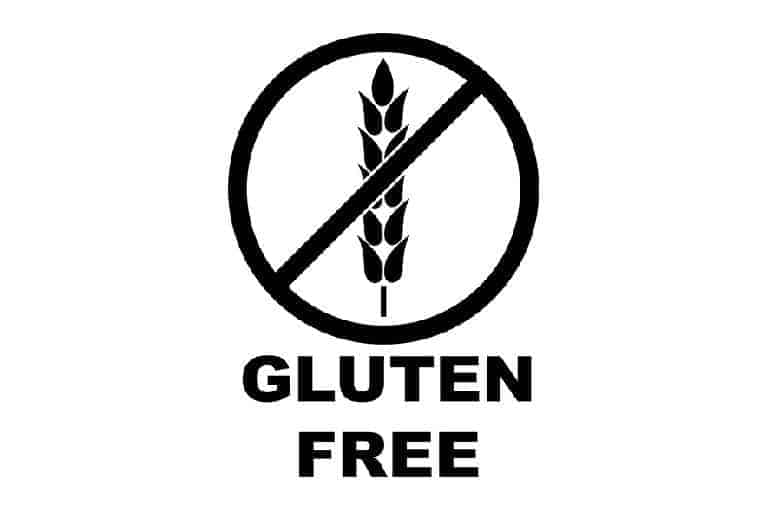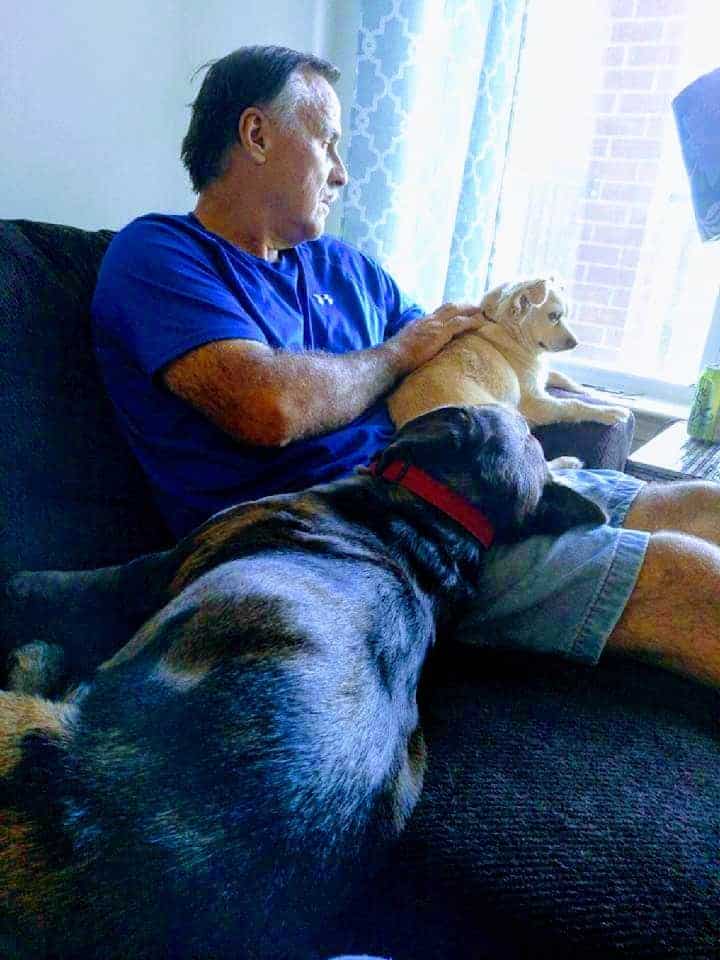
Not so long ago, and not so far away, I was diagnosed with Celiac Disease and had to start a gluten free diet. That was almost 20 years after my dad was diagnosed with Celiac. It runs in families, you see…
And because of that and the fact that I love to research things, I have so much I to tell you about Celiac.
In case you wanted to know what Celiac Disease Really Looks like…
Before I really have conscious memories, my dad started getting ill. I remember a kid in kindergarten asking me how long my dad had been sick.
“His whole life, I think.” My whole life, actually.
He was sick before the gluten free lifestyle and widespread knowledge about Celiac was a thing.
The thing about Celiac is for many people, it leads to extreme weigh tloss and mal-nourishment. That’s what happened to my dad. He was sick for so long, he almost died.
This is a picture of him before he was diagnosed with Celiac Disease. Unfortunately, it’s a newspaper clipping so you can’t see the grey skin.

Most people don’t realize that Celiac can be pretty dangerous.
A gluten free diet did wonders in helping him regain his health and vitality over time and I’m really grateful that 20 years later, I still have my dad.
See? No grey skin. No sunken cheeks or bones sticking out. Everything changed when he started a gluten free diet.

Celiac Disease is Still Misunderstood
I’ve had stomach problems my whole life, though nothing as drastic as my dad’s. I was even tested for Celiac but it as negative.
That was, unfortunately, thanks to a doctor that wasn’t as familiar with testing for Celiac Disease as I needed her to be.
But when you’ve got a feeling that you know what’s going on and a doctor passes you information that you know is wrong, I’ve never been one to give up. Call me obsessive (my family does!), but….
With a lot of research, I found a doctor that specializes in Diagnosing Celiac Disease. And then I almost cancelled my appointment after I learned they sometimes do a rectal exam. But my sister threatened my life so I kept it.
It’s good I did. It led to getting diagnosed with Celiac, adopting a gluten free diet, and ultimately feeling better. And it led to a ridiculous amount of research that I can pass on to you.
What is Celiac Disease, Exactly?
Unfortunately, there’s a lot of misinformation on this subject.
The number of times I’ve heard “a bite of that pizza won’t hurt you! It’s just a stomach ache…” makes me want to punch someone.
Celiac disease is an autoimmune disorder, not a stomach ache. When someone with the disease comes in contact with gluten (the protein found in wheat, barley, and rye), their body thinks it’s a foreign invader.
So it starts forming antiobodies like it does when you have a virus. It uses those little ninjas to attack the small intestine.
People with Celiac show places where the villi (which absorb nutrients from food) are damaged or completely gone.
That’s why people with Celiac are often mal-nourished before adopting a gluten free diet.
How Do You Know if You Have Celiac?
It’s actually a pretty uncommon disease, thankfully. Only about 1% of the general population has Celiac, but if you have a parent with the disease, you’re risk goes up to about 10%.
Because of that, experts recommend that you be tested for Celiac if you have a close family member with the disease. Just in case.
Celiac has over 300 possible symptoms.
Most people know about the gastrointestinal symptoms– the stomach ache, diarrhea, all that good stuff…
But many don’t realize that it’s also associated with symptoms that look like ADHD, Anxiety, Depression, Arthritis, Skin issues, problems with your teeth, iron deficient anemia, Fibromyalgia, and so much more.
Most people with gastrointestinal symptoms probably have a different digestive problem. In fact, when I first started talking to the doctor he told me that he suspected Irritable Bowel Syndrome.
Of course, that freaked me out. That’s what they told my Dad for years and he almost died because of it. But…
Thankfully, he was a good doctor. A knowledgeable doctor. One that tested me for Celiac anyway even though he initially didn’t think it was the problem.
Here’s a Celiac Self Inventory from the Celiac Disease Foundation.
Diagnosing Celiac starts with a blood test.
One thing I loved about my doctor is that he told me which tests he was ordering and why he wanted those specific tests.
There are quite a few blood tests that a doctor can run to look at celiac but the TTG-IGA is the most accurate and most reliable. If it shows up positive for Celiac, the odds of it being right around around 97%.
If it says you don’t have Celiac, the odds of it being right are around 97%. The most common reason that this test would fail to pick up an accurate Celiac Diagnosis is IGA deficiency.
Apparently, people with celiac are a bit more likely than other people to have this problem and it will give a false negative on this test.
So doctors can order a Total Serum IGA test (in addition to the TTG-IGA) which will tell them if it’s a problem.
I love a doctor who will explain the ins and outs of what he’s doing. It makes it so much easier to trust that they know what the heck they are doing and you aren’t going to end up nearly dead like your dad before he figures it out. Know what I mean?
I dug through medical journals to validate that what he told me was accurate (because I’m obsessive). It was.
If the Blood Test is So Accurate, Why is an Endoscopy Required?
A blood test isn’t enough to diagnose Celiac unless you’ve got a doctor that is really convinced that’s what is going on and there’s some reason that an endoscopy can’t happen.
Even though the blood test is pretty dang accurate, there’s still a chance that it’s wrong.
To Maintain a Gluten Free Diet to the degree required, You Have to be Sure…
You have to ask a thousand questions to make sure that they change their gloves, don’t use a shared fryer, and will use clean cookware and utensils in a separate space dedicated to gluten free food in the kitchen.
When you have Celiac Disease, you have to be militant about being gluten free. You can’t just go to a restaurant and get something that looks gluten free. Or just ask if it’s gluten free…
Those are 3 questions of the 500 you have to ask but still can’t be sure you won’t get sick from eating there.
Why? Because the amount of gluten it takes for your body to start attacking your intestines is so small you need a microscope to see it. And gluten can’t be boiled, fried, or baked off.
It’s a total and complete life change and it’s really hard to maintain. Doctors want to be positive it’s necessary. Plus, cutting gluten out of your diet means you won’t be getting the enriched foods with certain key nutrients. It’s important to know for sure.
And because most people need to be 100% sure that this kind of radical change that prevents them from the foods they love and does a number on your social life (because what social gathering doesn’t involve food?) is absolutely necessary.
3% wiggle room is enough for most people to loosen their gluten free vigor and for someone with Celiac Disease, that’s dangerous.
The damage created in the small intestine, if it isn’t healed, increases the likelihood of developing other life threatening conditions like MS and certain types of cancer.
A Gluten Free Diet is an Adjustment
When I was first diagnosed, I honestly thought it would be no big deal. I was familiar with gluten free foods since my dad has Celiac. It wasn’t a huge shock for me. I thought, “hey, this will help me get healthier!”
That lasted for about a month.
Until it hit me one day that this wasn’t a diet that I could stop when I got sick of it. It wasn’t a diet that I could take a “cheat day” with. It would would be forever and I’d never get to eat my favorite foods again. No wiggle room.
And it hit me how impossible it would be to maintain a gluten free diet without pre-planning and cooking ahead of time. Being someone with ADHD, that’s not exactly my strength…
And take out isn’t really an option. I learned that the hard way.
I had some anger and some frustration walking around the grocery store looking for something I could eat quick that wouldn’t make me sick and discovering that most of my options were things that I’d have to cook and I didn’t feel like cooking.
These days, though, I’m better with it. Occassionally I get pissed when I see a smores frappuccino at starbucks and remember that I can’t have it. But most of the time it doesn’t bother me any more.
Even when you are prepared for it, a Celiac diagnosis requires an adjustment period.
And if you find yourself slamming doors because you have to cook when anyone else in the world can just go grab take out but you can’t…just know you aren’t alo
Leave a Reply